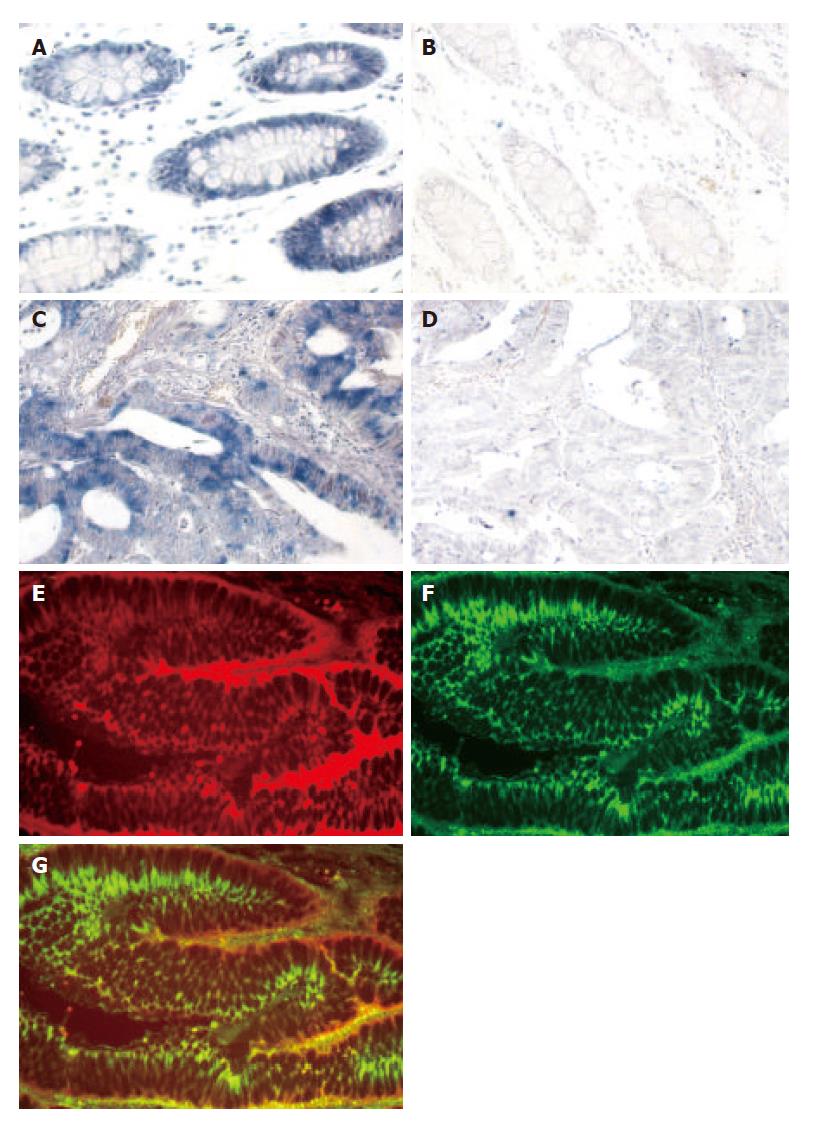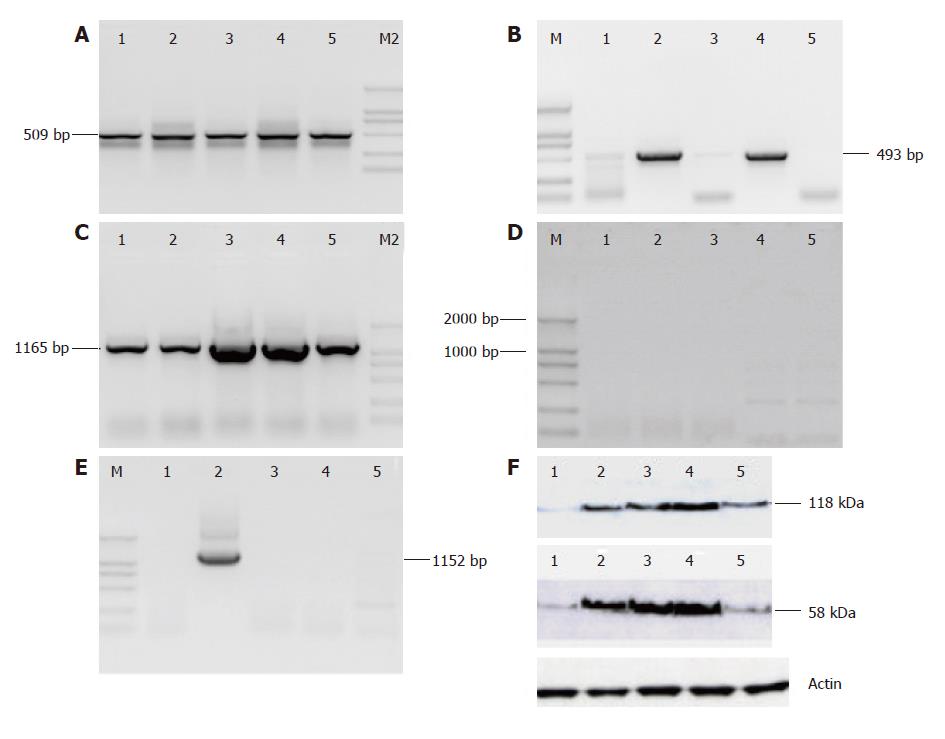Copyright
©2007 Baishideng Publishing Group Co.
World J Gastroenterol. Apr 28, 2007; 13(16): 2305-2311
Published online Apr 28, 2007. doi: 10.3748/wjg.v13.i16.2305
Published online Apr 28, 2007. doi: 10.3748/wjg.v13.i16.2305
Figure 1 Original expression of SNC73 in human epithelial-derived tumor cell lines.
(A) RT-PCR showing the expression of SNC73 in five cell lines, M: DL2000 Marker, 1. LoVo, 2. SW480, 3. HeLa, 4. SMC7721, 5. Bcap37. (B, C, D and E) immunohistochemistry showing the expression of SNC73 protein, of IgHα1. of Igκ. and of Igλ, respectively.
Figure 2 Expression of SNC73 mRNA in the epithelial cells of colon mucosa.
A, C: In situ hybridization of SNC73 mRNA in the normal colon mucosa and colon carcinoma by anti-sense SNC73 RNA probe, respectively; B, D: In situ hybridization of SNC73 mRNA in the normal colon mucosa and colon carcinoma by SNC73 sense RNA probe, respectively, as negative control; E: Expression of cytokeratin (Rhodamine-labeled) in epithelial cells by immunohistochemistry; F: Expression of IgHa1 (FITC-labeled) was expressed in epithelial cells by immunohistochemistry; G: The merger of (E) and (F) × 200.
Figure 3 The V(D)J recombination machine is present in human epithelia-derived tumor cell lines.
A-E: RT-PCR analysis of RAG1, RAG2, EBF, E2A, Pax5 in five cell lines. M: DL2000 Marker, 1. LoVo, 2. SW480, 3. HeLa, 4. SMC7721, 5. Bcap37; F: Immunoblot showing the expression of RAG1 and RAG2 in five cell lines.
- Citation: Geng LY, Shi ZZ, Dong Q, Cai XH, Zhang YM, Cao W, Peng JP, Fang YM, Zheng L, Zheng S. Expression of SNC73, a transcript of the immunoglobulin α-1 gene, in human epithelial carcinomas. World J Gastroenterol 2007; 13(16): 2305-2311
- URL: https://www.wjgnet.com/1007-9327/full/v13/i16/2305.htm
- DOI: https://dx.doi.org/10.3748/wjg.v13.i16.2305











